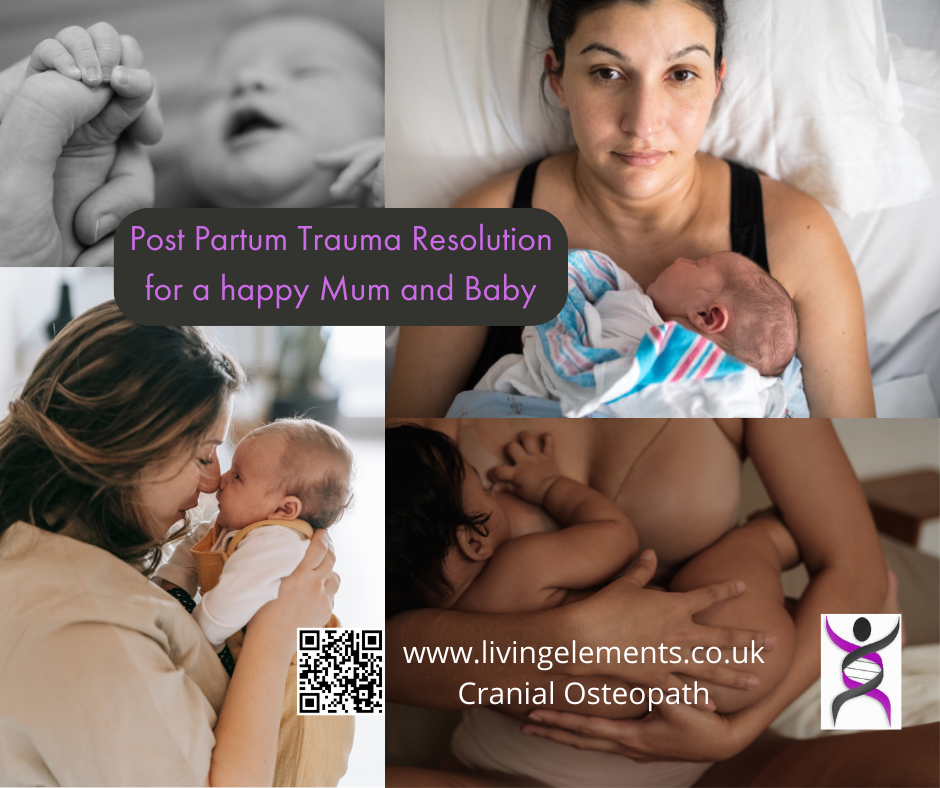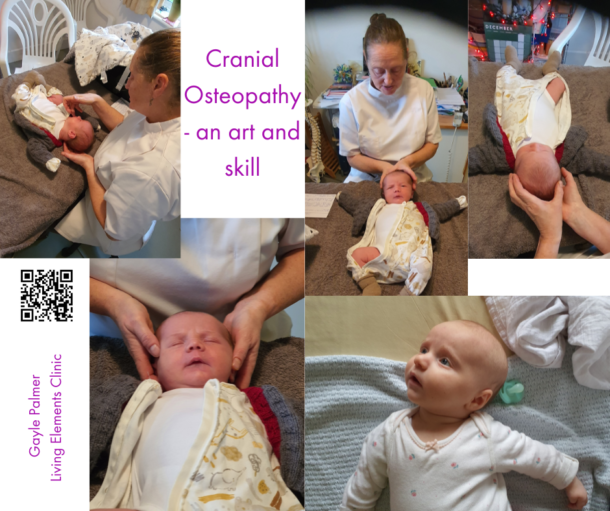Post Partum trauma resolution – don’t wait for it to go.. it might not
Q: I am a 34-year-old woman with an eight-week-old baby boy, but I feel 134. My delivery was “natural” over 24 hours, and a number of stitches were required. I am breastfeeding, but my neck, arm and shoulders ache and my lower back takes an age to get moving if I’ve been sitting for some time. I feel that I haven’t recovered from the birth.
As a recent Mum the above symptoms are not an unusual result of having a new being born and cared for. It is not easy – but Osteopathy can make it a whole lot more comfortable.
A: I do not believe that enough consideration is given to the enormous physical effort involved in carrying and delivering a baby. For nine months, your body coped with a steady rise in weight as your baby grew. Then you had to embark upon what must have seemed like a marathon to deliver him. With little time for recovery, you then had to take charge of a tiny, demanding child and cope with all the anxieties that entails.
Your body is tired emotionally and physically, and there are good reasons why you feel as you do. Let us consider possible causes of your physical symptoms. To enable the delivery of your child, your pelvis, hip bones (innominate bones), tail bones (sacrum and coccyx) and the ligaments supporting them, were “primed” by hormones to become more “mobile”. This allows the development of the birth canal.
Sometimes during labour, the innominate bones (pelvic), sacrum or coccyx rotate, flex, and extend. Post-delivery, they can remain slightly misaligned as the ligaments tighten up again. This problem and the subsequent imbalance of the spine may be just one factor.
It is understandable that your primary focus is on your child, rather than yourself. You want to be sure that he is comfortable and sleeping and eating well. But don’t forget that your own wellbeing is crucial for you to care for him.
When breastfeeding, it is essential to be in a comfortable position before you start. Make sure your supporting arm – on which the baby rests – is itself supported. Be aware of the tension passing through your arm into the shoulder as you take on his weight. And notice the position of your neck.
Checking for birth trauma
A feed can easily become 40 minutes in which forearm, shoulder and neck contract and in which the joints and tissues are hunched together. The neck muscles can become fatigued and the cervical vertebrae irritated. The spinal nerves may also be affected. This can cause symptoms such as pins and needles or pain in the arm.
Other baby-related activities will exacerbate new or existing problems:
you will find yourself using your washing machine much more,
pushing the pram,
not to mention the one-handed multi tasking that occurs when your baby needs holding as chores are done!
The legacy of pregnancy, birth and caring for a newborn can leave a woman with a stressed upper body which may be sitting on an imbalanced pelvis. Not a good state of affairs. But, with skilled and appropriate care this does not have to continue.
My advice is to undergo a full assessment with an osteopath, preferably a cranial osteopath. Ask them to check your pelvic and spinal alignment, and advise on massage and stretching techniques. Following that,
DO pay attention to your posture when you feed/pick up/put down/carry the baby. From my experience, the benefits of just one treatment are invaluable and can go a long way to getting the sense of your body back. In the longer term –
DO your pelvic floor exercises regularly, from now to ..eternity;
DO go to a Pilates class to work on your core stability and strength – we have them here at the Clinic during the daytime and evening;
DO go swimming if you can as your body is supported whilst you exercise. Even floating around is beneficial!
Part of the question and answer from the Daily Telegraph Dec 2008.
Gayle Palmer continues: there are a number of valuable other things to do. These include:
Take GNLD’s Salmon Oil Plus daily (preferably you will already have done this all the way through the pregnancy to ensure good nervous system, heart, circulatory and gut development for your baby and to minimize inflammation in yourself. LINK HERE to buy it online. It is especially important after delivery if you are breastfeeding – for the baby, but it also helps your own body to heal and repair.
Take time to emotionally bond with your baby and watch what the child is telling you… not in language but they are actually very good at using “structural language” ie how they move and their posture to inform you about what they need and want. Watch, listen and learn! e.g turning the head away if they are full of milk and had enough etc.
Let other people help and support you. This can be especially hard if you are a first-time mother and “trying to get it right”. There is no “right” sometimes. At times you will feel done-in. That is OK, normal and expected. Be available to accept help, and if need be – ask for it! eg shopping, requesting time to sleep and someone else minds the baby or makes you a meal. People WANT to contribute – but they need the space and your grace to do so..
To book a consultation online – follow this link: https://living-elements-clinic.cliniko.com/bookings?appointment_type_id=342129
Place your healing in my hands – YOUR health IS my Priority.
© Gayle Palmer D.O. 2016-24
Osteopath at the Living Elements Clinic


